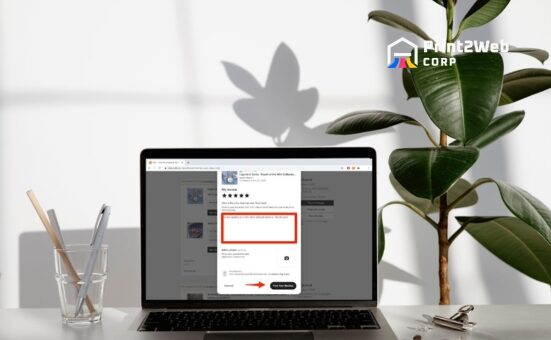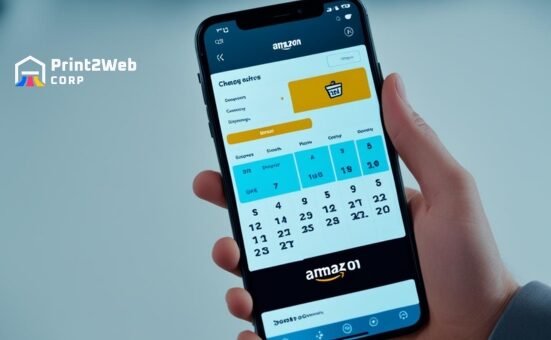Imagine you’re wandering through a bustling marketplace, each stall brimming with goods. What makes you stop and look? That’s right, the enticing descriptions that promise exactly what you’ve been looking for! As someone looking to boost their sales to the next level, knowing how to write product descriptions that sell isn’t just nice—it’s essential. Let me take you on a journey where we transform bland into grand and convince customers they can’t live without your offering.
For every seller eager to see their products fly off the shelf, crafting a compelling product description is your golden ticket. The trick lies in blending the right words with strategic psychology and a dash of SEO magic. Your goal? To paint such an irresistible picture of your product that potential buyers feel it’s made just for them. Be precise about its features, but don’t just stop there; highlight the benefits uniquely tailored to solve their problems and enhance their life. Remember, it’s not only about what it is; it’s about why they need it.
What You’ll Learn Here:
- Easy-to-apply tactics for magnetic product stories
- Tips on connecting features with real buyer benefits
- How simple language leads to a clear understanding
- Crafting descriptions optimized for search & sales
Understanding Product Descriptions
When you go shopping online or walk through a store, you often find yourself reading about what the product does and why it’s worth buying. This is where the power of words comes into play, most notably through product descriptions.

They are not just blocks of text but tools that can help a business win customers and make sales.
The Importance of Product Descriptions
The job of a product description is to provide customers with details about the features, benefits, and use of an item. Good product descriptions answer questions even before they arise in a shopper’s mind. They are there to explain how an item can fit into the customer’s life and solve their problems.
Imagine a pair of sneakers without any description – you wouldn’t know what makes them comfortable or better than any other pair. But with effective wording that paints a picture, those same sneakers can seem like a must-have item for anyone active or looking for comfort.
Basically, I see these written bits as your silent salesperson. They work hard behind the scenes to convince your visitors why they should buy from you instead of someone else.
What Is a Product Description?
A product description is a piece of writing attached to items on sale that tells what the product is all about. It includes essential info like what it looks like, how it works, and why it stands out from similar products on offer elsewhere.
It’s important because when people shop online especially, they can’t see or touch the items in person. So my job as someone who knows how to write product descriptions that sell is to bridge that gap with words – making sure each browser could almost feel like they’re already enjoying all those perks without having touched the thing themselves!
Think about it this way: The description is your first handshake with potential buyers; you want it strong and confident so that there will be many more handshakes (sales!) afterward.
Also Read: Unlock Profit Potential: Vending Machine Business Strategies
How to Write Engaging Product Descriptions that Sell
Writing a good product description is like telling someone why they should buy your product. It’s not just talking about what the product is or what it does. It’s about making people see why it’s something they need or want in their lives.

When I write these descriptions, I try to think like the person who will read them.
Knowing Your Customer – The First Step to Write Product Descriptions That Sell
- Before I start writing, I need to understand who will buy this product. Who are they? Why do they need this item? What might stop them from buying it? This is where knowing your customer is so important.
- Imagine you’re selling a warm winter coat. If you know your customer lives somewhere very cold, you will talk about how cozy and warm the coat will keep them. If your customers are parents looking for their kids, mention that the coat is easy to clean and tough enough for playtime.
- It’s all about putting myself in the customer’s shoes. I think of what would matter to me if I were them. Is it the style? Is it how long it lasts? Maybe it’s something eco-friendly? Understanding these bits can make all the difference because then, every word in my description works towards showing people exactly why this product would fit perfectly into their lives.
- By getting into the minds of my potential buyers and addressing their wants and needs directly, my product descriptions become more than just words; they become conversations with each person considering a purchase.
Showcasing the Perks For Product Descriptions
When you write product descriptions that sell, it’s like telling someone why a certain thing is perfect for them. It’s important to show what makes your stuff special.

These little details are called “perks,” and they give people reasons to buy what you’re selling.
Providing All the Necessary Information in the Description
To make sure people know what they’re buying, I always make sure I put in every detail they need. The size, color, how it works, and any other useful bit of info should be easy to find. Let’s say we’re talking about a watch. I wouldn’t just say “It tells time.” That’s too simple.
Instead, I’d dive into what makes this watch awesome. Maybe it has a light-up dial for seeing the time in the dark or a strap that never breaks. If folks can see at a glance all these good things in your product description, they’re much more likely to think “I need this!” and go on to buy it.
So remember:
- Be Clear: Get right to the point about why your thing is great.
- Be Complete: Got something cool about your product? Make sure you say so.
- Be Compelling: Make folks feel like they would miss out if they don’t have your product.
Putting all the right details in place helps customers figure out if what you’re selling is right for them—and when folks find just what they need, that’s when they buy!
Also Read: Private-Label Credit Card Secrets: Unlock Shopping Benefits!
Facilitating Easy Readability and Scannability of Product Descriptions
When I set out to write product descriptions that sell, I keep in mind that the ease with which a potential buyer can read and scan through the content is crucial.

Ensuring my descriptions are easy to read and scan, not only makes the information more accessible but also creates an environment where shopping is not a chore but a pleasant experience. Here’s how to strike the balance:
Keep it Short and Sweet
- Use bullet points or numbered lists for important features or benefits.
- Highlight key features in bold to make them stand out.
Structure for Scannability
- Use subheadings (like this one) to guide readers through each section.
- Leave plenty of white space between lines and paragraphs – this prevents visual overwhelm.
Be Clear and Concise
- Write short sentences that pack a punch – long-winded explanations can lose the reader’s interest fast.
- Avoid industry jargon unless necessary.
Mix it Up with Visual Elements
- Include images or icons next to bullet points for visual appeal.
- Tables work well for specifications or comparisons.
By integrating these elements thoughtfully, you foster readability, making it easier—and more enjoyable—for customers to learn about what you’re selling.
Importance of Spell Checking During Writing Product Descriptions
When I think about writing product descriptions that sell, I always keep in mind that the little details can make a big difference. Here are some key points to consider about why spell-checking is so crucial:

Positive Aspects:
- Professionalism: Proper spelling shows professionalism and attention to detail, which can increase customer trust.
- Credibility: Without errors, your brand appears more credible, which can lead to increased sales.
- User Experience: Clear and correct descriptions improve the overall shopping experience for your customers.
Negative Aspects:
- Distrust: Spelling mistakes can lead to doubt in consumers’ minds about the quality of the product.
- Miscommunication: Errors could cause confusion or misinterpretation of what you’re selling, possibly resulting in returns or bad reviews.
Recommendations to Create Impressive Product Descriptions
Writing product descriptions is a real craft. It’s about getting people excited and ready to hit that “buy” button.

But it’s not just about listing what you’ve got; there are some special tricks I can share with you to make your descriptions pop and convince customers they need your product.
Using Language that Appeals to Your Customer Base
First, it’s all about the language – the words we choose and how we put them together. When I sit down to write, I think hard about who will be reading. What are their likes, and dislikes? How do they talk to their friends? If you can speak their language, they’re more likely to listen.
Let me explain: if you’re selling high-end watches, your language should be fancy and polished. But if you’re selling skateboards, use cool slang that skaters dig. This way, customers feel like you get them which makes them trust you more.
Remember, never use big or complicated words when simpler ones will do the job just as well – this helps everyone understand exactly what’s great about your product.
Infusing Humor into Writings for a Lively Description
Now let’s bring in some laughs! A funny line or a little joke can make reading fun. It doesn’t have to be a “knock-knock” kind of stuff; just a light touch of humor shows there are real humans behind the screen–friendly ones!
For example: Instead of calling a gardening tool “effective”, maybe call it “your plant’s new best buddy”. It gets the point across but keeps things upbeat.
But keep in mind – humor has its place. You know where it fits best depending on what’s up for sale.
Using Sensory Words for an Enhanced Shopping Experience
Lastly, let’s get sensory – words related to our senses like sight (“bright”, “colorful”), sound (“whisper-quiet”), taste (“sweet”, “tangy”), smell (“fragrant”), and touch (“velvety”). By painting a picture with these kinds of words, customers can imagine the experience even better as if they’re touching or using your product.
Imagine describing chocolate – sure saying it tastes good is fine but say it melts like velvet on your tongue”… now that sticks with someone craving chocolate!
So when I write these descriptions, I mix in lots of these juicy sensory words which helps folks connect deeper with my product because sometimes people need help imagining how something feels or works before they say yes and buy it.
Let me wrap this up: When writing descriptions remember this stuff is key! Talk like your customers talk; make ‘em smile with some playful jokes; help them see, hear, and feel what they’re buying by using sensory details generously. This combo is my secret recipe for giving life to products through my writings – making sure whatever I’m describing sounds super tempting!
Also Read: Unlock Success with Amazon Search Terms Report Insights
Frequently Asked Questions
How do you write a description of an item you are selling?
Include all the item specifications, details, and anything a shopper might need to know. List the key features and how they will benefit the buyer. Keep descriptions simple; break them into short paragraphs and use bullet points.
How do you write a product guide?
Define your audience: Who will be reading your product guide? Identify the purpose of your product guide: What do you want to achieve with it? Outline the contents of your product guide: What topics will you cover? Create your product guide: Write the content and design the layout.
How do you write a catchy description?
Avoid lengthy paragraphs and sentences. Long content always tends to distract the reader’s attention. Use simple words and avoid difficult technical terms that are hard to understand for a general audience. Use bullet points to create a concise description.
Conclusion
Writing product descriptions that sell isn’t just about listing the features. It’s about painting a picture for your customers, helping them see how this product can fit into their lives. As I craft these descriptions, I think of the dreams and needs of my audience and speak directly to those desires.
Words are powerful tools that can shape how someone views what you’re offering, turning a simple item into an irresistible must-have. To wrap things up, remember to keep it simple, focus on the benefits, and always connect emotionally with your potential buyers.







